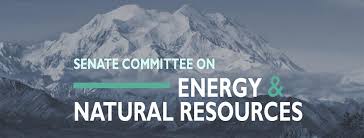Radioactive Waste 396 - Congress Considering Spent Nuclear Fuel Storage - Part 1 of 2 Parts
Part 1 of 2 Parts
Congress has been wrestling with the question of what to do with spent nuclear fuel for decades. This week, the Senate waded into the swamp again. They want to find a way to avoid political squabbles that killed previous proposals. They are working on new legislation that would distribute the spent nuclear fuel to multiple storage sites. There are also new technologies being developed that might be able to help with the problem.
Everyday, the U.S. Department of Energy provides two million two hundred thousand dollars to help national utilities cope with storing spent nuclear fuel. In 1982, a law was passed that instructed the federal government to collect the spent nuclear fuel from commercial power reactors and store it in a deep geological repository where it would be safe for hundreds of thousands of years. It will take this long for some of the radioactive isotopes to decay to the point where the spent nuclear fuel is no longer dangerous to people or the environment. The deadline for the completion of the repository was 1998.
In 1987, an abandoned salt mine under Yucca Mountain in Nevada was selected for the national repository for spent nuclear fuel. Preliminary work was done to prepare the site until 2009 when the project was cancelled by the administration of President Obama with the support of the Nevada Congressional delegation. Part of the reason had to do with revised environmental impact statements that raised questions about the possible flow of ground water through the salt mine. The Trump administration took action to reconsider the Yucca Mountain site and even began working on licensing. However, Congress cancelled the request for funding to move forward.
More than two decades after the 1998 deadline, there is still no place in the U.S. for the permanent storage of spent nuclear fuel. Spent nuclear fuel is first moved to cooling pools at the ninety-five commercial nuclear power plants in the U.S. After a mandatory five years in the cooling pools to let the hottest radioactive isotopes to decay, the fuel assemblies are moved to temporary storage in cylindrical steel and concreate dry casks on site if such storage is available. Otherwise, the spent nuclear fuel are left in the increasingly crowded cooling pools. Some pools are so full that if many of the fuel assemblies are not removed in the next few years from some pools, the reactors at the sites will have to be shut down. Obviously, thing cannot go on the way they have. Interest in investing in the nuclear industry will continue to decline as long as the spent nuclear fuel problem remains unsolved.
Now there is a bipartisan Congressional push to work on the spent nuclear fuel problem. Alaskan Republican Senator Lisa Murkowski opened a hearing on the issue of spent nuclear fuel last Thursday in the Senate’s Energy and Natural Resources Committee. She is the sponsor of a bill to create a new agency in charge of dealing with U.S. spent nuclear fuel. The bill also requires that local consent be a part of the decision-making process. Such local consent would be “insulated” from pressure by members of Congress. Local residents living near a selected storage site whether that site is temporary or permanent would have the right to some say in the siting even if they would not be able to veto it.
Please read Part 2
